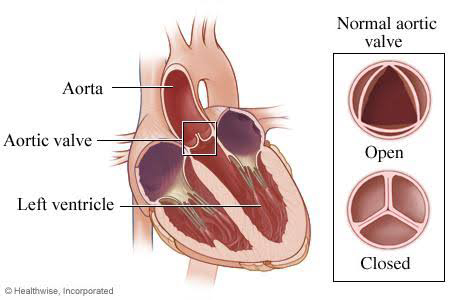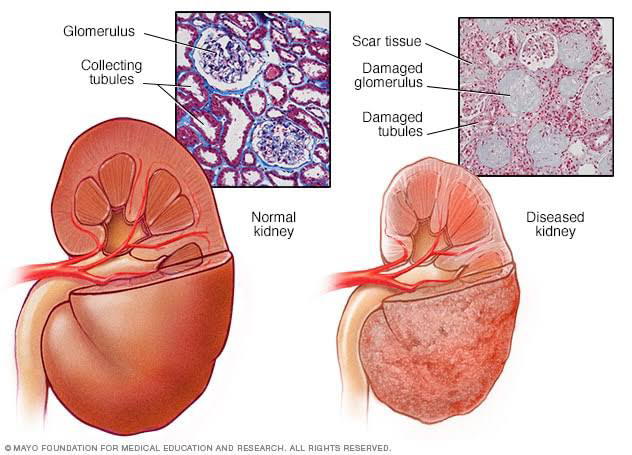⭐⭐JAUNDICE ⭐⭐
⭐⭐ JAUNDICE ⭐⭐
1) DEFINITION OF JAUNDICE :
# Jaundice is yellowish discoloration of
skin, mucous membrane and sclera
due to increased bilirubin.
# Sclera is yellow because it contains
large amount of elastin which has high
affinity for bilirubin.
# Normal bilirubin = 0.5 - 1.2 mg/dl
Clinically evident jaundice -
when bilirubin > 2.5 mg/dl
# Urobilinogen is colourless. It gets
converted to urobilin which is
yellow coloured.
# Bilirubin - yellow
coloured
# Conjugated bilirubin - water
soluble
# Unconjugated bilirubin - not water
soluble.
⭐⭐⭐⭐
2) NORMAL BILIRUBIN METABOLISM :-
Red cell lysis
|
Haeme
|
Bilirubin ( indirect or unconjugated)
|
Binds to albumin
|
Goes to liver
|
Bilirubin is separated from albumin
|
Conjugation
|
Bilirubin glucuronide
( Conjugated or direct bilirubin)
|
Goes to intestine through bile duct
|
In the colon, colonic bacteria deconjugate the bilirubin and convert
it into urobilinogen
|
A part of urobilinogen is reabsorbed
into blood and carried to liver through
portal vein ( enterohepatic circulation)
Some amount of it is recycled for bile
production ,while the remaining amount
reaches the kidney where it is
converted into urobilin and excreted
in urine.
|
Remaining part of urobilinogen present
in the intestine which is not reabsorbed,
is converted directly to stercobilin or
first into Stercobilinogen and then into
stercobilin by Intestinal bacteria.
This stercobilin gives colour to faeces.
⭐⭐⭐⭐
3) CLASSIFICATION OF JAUNDICE ON THE BASIS OF PATHOLOGY CAUSING JAUNDICE :-
(a) Hemolytic jaundice -
(I) It is caused due to increased
hemolysis of RBCs - increased
bilirubin production.
(II) Hepatocellular jaundice -
It occurs due to problem in liver
cells which affects the function of
conjugation of bilirubin.
(III) Cholestatic / obstructive / surgical
jaundice - There is obstruction to
the flow of conjugated bilirubin into
the gut. This leads to backflow of
bilirubin into the bloodstream .
⭐⭐⭐⭐
4) HEMOLYTIC JAUNDICE :-
(a) It is caused due to increased
hemolysis of RBCs. Large amounts of
unconjugated bilirubin is produced.
Liver is normal. Hence, it will
conjugate as much as possible even if
not able to conjugate the whole
bilirubin.
Therefore, as net conjugation
increases, production of urobilinogen
and stercobilinogen also increases.
(b) Causes of Hemolytic jaundice :-
(I) Intraerythrocytic causes:-
# Sickle cell anemia - presence of
abnormal sickle hemoglobin i.e
HbS leads to hemolysis.
( Mutation - glutamate is replaced
by valine.)
# Thalassemia - reduced or absent
synthesis of globin chain leading
to abnormal Hb and hemolysis.
# Hereditary spherocytosis -
Mutation in red cell membrane
protein - spherical RBCs are
formed which makes it difficult
for them to pass through the
spleen causing their hemolysis.
# G6PD deficiency :-
G6PD enzyme causes production
of NADPH in RBCs by HMP shunt.
NADPH causes production of
reduced glutathione which
neutralizes oxygen free radicals.
G6PD deficiency causes free
radical damage to RBCs.
# Vit B12 and folate deficiency-
They convert homocysteine to
methionine. Deficiency leads to
hyperhomocysteinemia &
increased hemolysis.
(II) Extraerythrocytic causes:-
# Antibodies - Autoimmune &
isoimmune hemolytic anaemia.
# Malaria - Malarial parasite causes
lysis of RBCs.
# Prosthetic heart valve - Hemolysis
due to turbulent flow through valve.
# Drugs - Dapsone.(Hemolysis due
to generation of free radicals by its
metabolite)
Sulfasalazine.
#Paroxysmal nocturnal
hemoglobinuria - there is lack of a
protein CD55 on the surface of RBCs
which protects them from body's
immune response.
(c) Clinical features of Hemolytic
jaundice:-
(I) Pallor - due to hemolysis
(II) Jaundice - due to increased
unconjugated bilirubin in the blood.
(III) Hepatosplenomegaly -
Due to increased work of liver
(Conjugation) and Splenomegaly
due to increased workload of
of spleen (RE cells - reticuloendothelial cells) of destroying the damaged RBCs
damaged RBCs.
(IV) STOOLS - DARK COLOURED -
due to increased stercobilinogen
because of increased bilirubin
entering the liver.
(V) URINE - DARK YELLOW - due to
increased urobilinogen.
(d) Investigations of hemolytic
jaundice:-
(I) Serum bilirubin - Increased.
(Unconjugated hyperbilirubinemia)
(II) Urine bilirubin - absent.
(Unconjugated bilirubin is present in
blood but it is not water soluble.
Hence, it doesn't enter the urine)
(III) Urine urobilinogen- increased.
(due to increased amount of bilirubin
reaching the liver for conjugation)
(IV) Liver function tests.
(V) Evidences of hemolytic anemia -
Peripheral blood smear.
⭐⭐⭐⭐
5) HEPATOCELLULAR JAUNDICE:-
(a) It occurs due to problem in liver cells
which affects the function of
conjugation.
(b) Causes of hepatocellular jaundice:-
(I) Viral hepatitis.
(II) Chronic hepatitis.
(III) Alcoholic hepatitis.
(IV) Cirrhosis.
(V) Drug induced hepatitis- Isoniazid,
Rifampicin, Erythromycin.
(c) In this case, both unconjugated &
conjugated hyperbilirubinemia is
present.
Unconjugated - Ability of hepatocytes
to conjugate bilirubin is impaired due to
disease. Therefore, unconjugated
bilirubin accumulates in the blood.
Conjugated - Some conjugation occurs
in cells which are normal but destruction
of hepatocytes causes spill over of
conjugated bilirubin into blood. Also,
small intrahepatic bile canaliculi may be
destroyed due to inflammation causing
entry of conjugated bilirubin into blood.
(d) STOOL COLOUR - NORMAL
Not darker because net conjugated
bilirubin reaching the gut is decreased
because of damage to liver. Therefore,
stercobilinogen production decreases.
Not pale as in case of obstructive
jaundice because there is no complete
obstruction to the flow of conjugated
bilirubin into the gut unlike the case of
obstructive jaundice.
(e) URINE COLOUR - DARKER
because even if net urobilinogen
production is decreased as very less conjugated bilirubin enters intestine
conjugated bilirubin entering the blood is increased due to damaged blood vessels & it is excreted through the
kidney as it is water soluble & yellow
coloured.
⭐⭐⭐⭐
6) CHOLESTATIC JAUNDICE/
OBSTRUCTIVE JAUNDICE/ SURGICAL
JAUNDICE:-
(a) There is obstruction to the flow of
conjugated bilirubin into the intestine.
It can be at the level of intrahepatic
smalll ducts or extrahepatic ducts.
Conjugated bilirubin doesn't enter the
intestine. Therefore, urobilinogen &
stercobilinogen are not formed - PALE
CLAY COLOURED STOOLS.
But, URINE IS DARK because there is
backflow of conjugated bilirubin into
the blood which is excreted into the
urine. (Conjugated bilirubin is water
soluble & yellow coloured)
(b) causes of cholestatic jaundice:-
(I) Intrahepatic duct obstruction:-
# Drugs, Alcohol - Damage to ducts.
# Chronic hepatitis, cirrhosis.
# Viral hepatitis.
# Primary Biliary Cirrhosis.
# Severe bacterial infection.
# Secondaries in liver.
# Ulcerative colitis - Release of
inflammatory agents in the colon &
their absorption into enterohepatic
circulation - sclerosing cholangitis.
# Pregnancy - Elevated estrogen &
progesterone may affect the proper
functioning of liver & gall bladder.
# Total parentral nutrition - The
intestinal epithelial barrier function
is lost because of bacterial
overgrowth due to deprivation of
enteral nutrition. These bacteria
in intestine release endotoxins
which enter the liver through portal
system & cause cholangitis &
cholestasis.
# Hodgkins lymphoma - Hepatic &
biliary infiltration by cells of lymphoma
# Hypotension - may cause liver
ischemia.
# Granulomatous infections- TB,
Sarcoidosis - inflammation & fibrosis
causes obstruction.
(II) Extrahepatic duct obstruction:-
# Carcinoma of bile duct, head of
pancreas, Ampulla of Vater.
# Gall stones.
# Stricture of bile duct.
# Helminths in Common Bile Duct.
# Sclerosing Cholangitis.
# Choledochal cyst, Biliary atresia
# External compression by lymph
nodes or tumor
(III) Inborn diseases:-
# Benign Recurrent Intrahepatic
cholestasis.
# Progressive Familial Intrahepatic
cholestasis.
(c) Symptoms of cholestatic jaundice:-
(I) Jaundice - Conjugated bilirubin
enters blood.
(II) Fever - In case of Cholangitis.
(III) Clay coloured stools. (explained
above)
(IV) Dark Urine.
(V) Bone pain - Vitamin D3 is
hydroxylated to 25 OH Vitamin D3 in
liver. Loss of this function causes
bone pain.
(VI) Haemorrhagic manifestation -
Liver produces coagulation factors.
Loss of this function causes
Hemorrhagic manifestations.
(VII) Abdominal pain - Stasis of bile
causes spasm of Biliary apparatus
leading to pain. Other cause- liver
enlargement may stretch glisson's
capsule rich in nerves.
(VIII) Weight loss - due to
malabsorption because of absence of
bile in intestine.
(IX) Pruritus - increased bile salts
cause nerve irritation.
Mast cells release histamine causing
itching.
(X) Steatorrhoea - fatty stools - bile is
required for digestion of fats.
Decreased bile in intestine impairs
digestion of fats - fatty stool
(XI) Vitamin deficiency - fat soluble
Vitamin K, E, D, A are not absorbed due
to absence of bile.
(d) Signs of cholestatic jaundice:-
(I) Jaundice.
(II) Scratches on skin.
(III) Xanthoma - Cholesterol deposits
on tendons - cholesterol is normally
secreted in bile. In obstructive
jaundice, the cholesterol doesn't
enter intestine due to obstruction &
hence blood cholesterol increases.
(IV) Xanthelasma- Yellowish deposits
of cholesterol under skin of eyelids.
(V) Secondary Biliary Cirrhosis.
(Late feature)
(VI) Signs of liver cell failure.
(Late feature)
(VII) Enlargement palpable Gall
bladder due to bile accumulation -
In case of Carcinoma of head of
Pancreas.
(e) Investigations of cholestatic
Jaundice:-
(I) Urine bilirubin - Increased -
conjugated bilirubin which enters the
blood is excreted through kidney.
(II) Urine urobilinogen- Absent - As
conjugated bilirubin doesn't enter
intestine.
(III) Serum bilirubin- increased -
Conjugated hyperbilirubinemia.
(IV) USG , CT.
(V) ERCP & MRCP - obstruction,
stricture
(VI) PTC (Percutaneous Transhepatic
Cholangiography)
(VII) Liver biopsy.
(VIII) Liver function tests.
(IX) Prothrombin time - increased
(X) Tumor markers- CA 19/9 - for
carcinoma of pancreas
(XI) Urine test- Hays test, fouchets test
(XII) Endoscopic ultrasound
⭐⭐⭐⭐⭐
7) CLASSIFICATION OF JAUNDICE ON THE
BASIS OF FAULT IN BILIRUBIN
METABOLISM:-
(a) Predominantly Unconjugated
hyperbilirubinemia:-
(I) Increased production of bilirubin:
# Hemolysis.
# Ineffective erythropoesis.
# Reabsorption of hematoma.
(II) Decreased bilirubin uptake by
liver:
# congestive heart failure - blood
supply to the Liver is decreased.
# Portosystemic shunting- Liver is
bypassed.
# Sepsis.
# Drugs like Flavaspidic acid - z
protein increases net bilirubin uptake
by binding to it. Flavaspidic acid
inhibits z protein.
(III) Decreased conjugation of bilirubin:
# Gilbert syndrome- Mutation of UGT
enzyme - UDP Glucoronosyl
Transferase. This enzyme helps in glucuronidation.
# Criggler Najjar Syndrome- Mutation
in gene that codes for UGT.
# Acquired dysfunction of UGT-
Cirrhosis & hepatitis.
(b) Predominantly Conjugated
hyperbilirubinemia:-
(I) Intrahepatic:-
# Dubin Johnson syndrome-
Mutation in gene coding for protein
which causes transport of
conjugated bilirubin from
hepatocytes into biliary canaliculi.
# Rotor's syndrome- Mutation in
genes that code for proteins that
transport bilirubin from blood into
liver. As a result, bilirubin is less
effectively taken by liver.
# Benign Recurrent Intrahepatic
cholestasis.
#Cholestatic jaundice of pregnancy.
# Acquired cholestasis - Cirrhosis,
hepatitis, drug induced.
(II) Extrahepatic :-
# Bile duct stones.
# Carcinoma of stricture of bile duct.
# Carcinoma head of pancreas.
⭐⭐⭐⭐⭐⭐⭐⭐




Pointwise , relevant & useful information.
ReplyDeleteThank you so much 😊😊
DeleteVery nice keep it up
ReplyDeleteVERY NICE DR
ReplyDeleteThank you so much 😊😊
DeleteThank you so much 😊😊
ReplyDelete👍👍👌
ReplyDeleteThank you so much 😊😊
DeleteProductive 👌
ReplyDeleteThank you so much 😊😊
Deleteछान बेटा, खुप आवडला हा लेख|
ReplyDeleteThank you so much madam 😊😊
Deleteप्रस्तुतिकरण की कला की मैं बहुत दाद देती हूं
ReplyDeleteडॉ. आयेशा।
Thank you so much madam 😊😊
Delete👌👌
ReplyDeleteThank you so much 😊😊
Delete👍👍
ReplyDeleteThank you so much 😊😊
DeleteThank you so much 😊😊
ReplyDelete